Monday, December 30th, 2019.
In this Daily: 4 Costa Rican Animals to spot during dry season in the 1000 acre dry forest reserve
Dry season brings quite a few changes to the behavior of animals in the 1000 acre reserve at Las Catalinas, as these animals must respond to the differences in availability of foliage and water.
As these conditions change out in the region’s national parks and in the nature reserve at Las Catalinas, the thinning ground cover can also make it easier to spot the ground-based animals that live in the reserve while out on town’s multi use trails.
Four of these terrestrial creatures are the Tayra, the Gray Fox, the Nine-Banded Armadillo, and the Central American Agouti.
Tayra / Tayra (Eira Barbara)
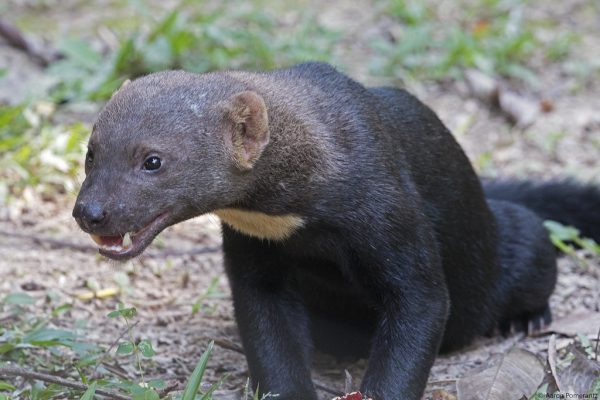 PC: Commons
PC: Commons
Physical Description: Adult tayras range from 22 to 28 in, with a long bushy tail that ranges from 15 to 18 in. These creatures are covered in a uniform coat of short, dark brown or black fur with throat markings of a lighter color that are distinct to each individual.
Activity: Tayras are typically active during the day, although their range extends to both early morning and evening around dawn or dusk. During this time, they are opportunistic omnivores, hunting small reptiles, rodents, invertebrates, bugs, and scavenging from edibles fruits and plants.
Notable Behaviors: Tayras are excellent climbers, using their long tail for balance, and can move at high speeds through the underbrush in a long loping gallop. Though they prefer not to, they are capable swimmers if needed. During their roaming, tayras have also been known to be curious about humans, and can sometimes be spotted at a distance observing.
Interesting Facts: Tayras generally live in underground burrows, which are also where they raise their young. Juvenile tayras are born early and blind, and rely entirely on their mothers for the first two months of their lives, at which point they open their eyes and begin to learn to hunt. These animals grow quickly, though, and by 6 months are hunting on their own and expected to develop their own territories by 10 months old.
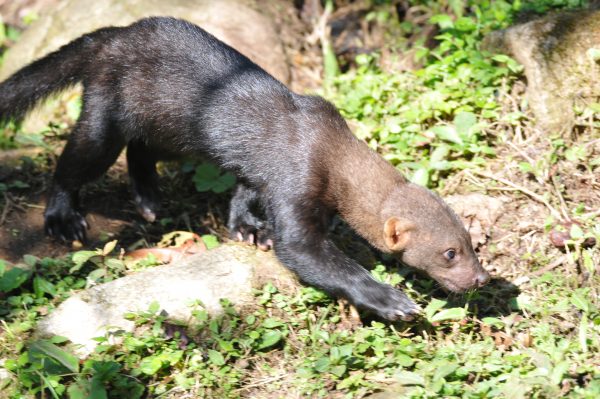 Tayras are known in some places as cabeza de viejo, or "old man's head" due to the wrinkles on their eyes and faces | PC: Commons
Tayras are known in some places as cabeza de viejo, or "old man's head" due to the wrinkles on their eyes and faces | PC: Commons
Zorro Gris / Gray Fox (Urocyon cinereoargenteus)
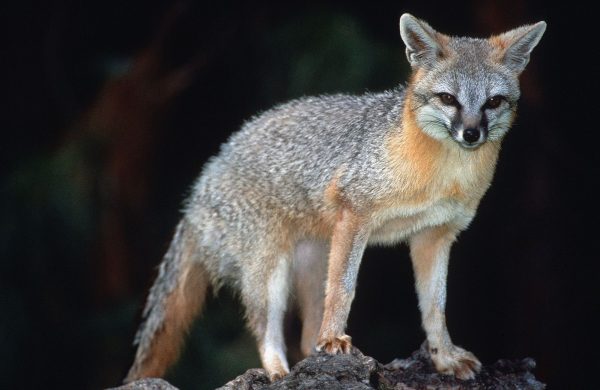 PC: Commons
PC: Commons
Physical Description: Gray foxes range from 30 to 44 in from snout to hindquarters, with a tail ranging from 10 in to 17 in on larger individuals. In Costa Rica, gray foxes tend smaller in line with Bergmann’s Rule, but still have the distinctive gray colorations that separate them from their cousins red foxes and other Costa Rican species like coyotes.
Activity: Gray Foxes are primarily nocturnal, but are active enough during periods of twilight to also be classified as crepuscular, making early evening the best time to spot these animals out in their natural habitats.
Notable Behaviors: The gray fox is one of the only canines on the planet that can climb trees, with strong hooked claws that allow it to scramble up trees easily, before descending either from jumping from branch to branch or backing down slowly like a cat. This allows it to escape from its natural predators like larger dogs and coyotes, and gives it an edge while hunting voles, shrews, mice, and other small rodents.
Interesting Facts: Gray foxes’ ability to climb trees also makes them the only canine who construct dens above the ground. Sometimes ranging up to 30 feet in the air, gray foxes often spend the day in the hollows of trees.
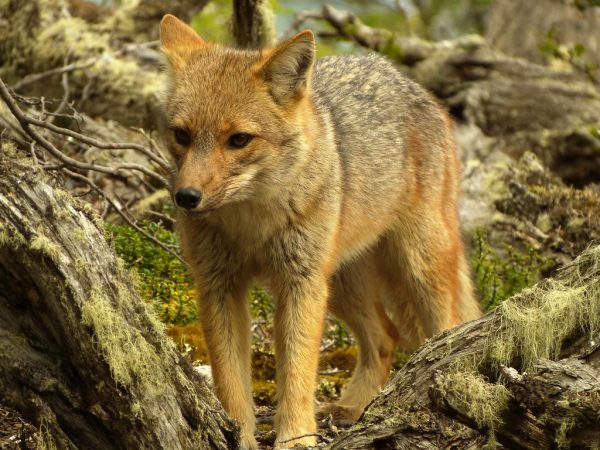 The gray fox's ability to climb trees makes it distinct among canines, with the exception of the Asian raccoon dog | PC: Commons
The gray fox's ability to climb trees makes it distinct among canines, with the exception of the Asian raccoon dog | PC: Commons
Cusuco / Nine-banded Armadillo (Dasypus novemcinctus)
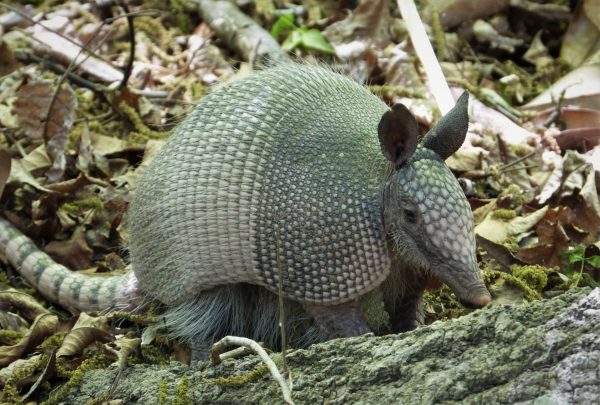 PC: Commons
PC: Commons
Physical Description: Armadillos range from 20 to 28 in long, and are immediately recognizable due to their tough hides and tails, and the distinctive bony plates that give the species their names (which translates to “little armored one”). Contrary to their name, nine-banded armadillos can actually have between 7 and 11 bands.
Activity: Armadillos are most active and easily spotted at dusk around their burrows, as well as throughout the evening into the dawn hours. Armadillos wander their distinct territories foraging primarily for insects, with seeds, tubers, fruits and berries making up about a tenth of an armadillo’s diet.
Notable Behaviors: Armadillos are most typically known for one of their predator responses, in which they curl up into a near-spherical ball, tucking tail and head into a defensive curl surrounded by their bony armor. However, armadillo also have a number of other behaviors to escape potential threats, including deceptive speed, rapid burrowing, and the ability to jump nearly 4 feet straight up in the air.
Interesting Facts: Armadillos are prolific burrowers, and often have between 10 and 15 burrows on a single range. Adding to their wide array of movement methods, armadillos also have an internal buoyancy control for aquatic movement, either removing air and walking along the bottom of the water for up to six minutes, or inflating their shell to float across the water.
Also, armadillos almost always give birth to four identical young, one of the few examples of polyembryony in mammals.
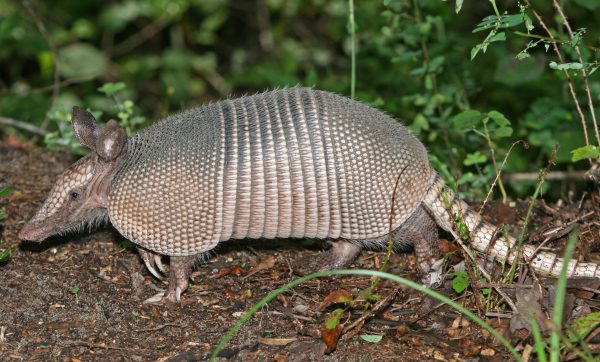 The nine-banded armadillo is surprisingly active and agile for its size and shape, able to run quickly, burrow, swim above and under the water, and curl up into a ball when threatened | PC: Commons
The nine-banded armadillo is surprisingly active and agile for its size and shape, able to run quickly, burrow, swim above and under the water, and curl up into a ball when threatened | PC: Commons
Guatusa / Agouti (Dasyprocta punctuate)
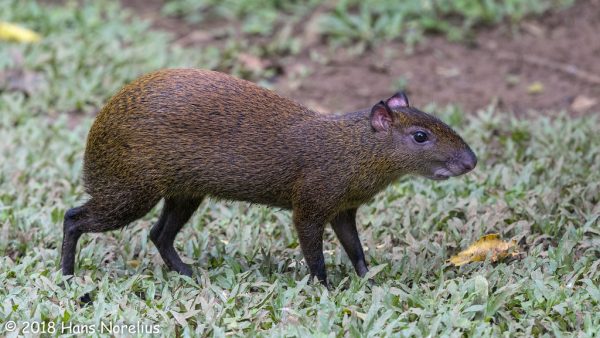 PC: Commons
PC: Commons
Physical Description: A close relative to the guinea pig, agoutis are known for their plump bodies, with long hind legs and slightly shorter front legs that gives them a powerful and fast stride that helps them avoid predators. All individuals of the species have a coarse, brown and black fur that raises when they feel threatened.
Activity: Agoutis are most active during the day as they forage along the forest floor, searching for areas with easily available fruit, where they can be spotted. These species are very cautious, and can best be spotted from afar in areas with available food or water.
Notable Behaviors: Agoutis often travel alone, but in the wild can be known to gather in groups of up to 100 to forage, finding safety in numbers. They are known as swift and powerful runners that take to water easily, and are notable among for their ability to avoid predators for hours on end.
Interesting Facts: Using their fore paws, agoutis use their very powerful teeth to break into a wide array of fruits and nuts, considered one of the few species along with the macaw that can break open Brazil nuts without tools.
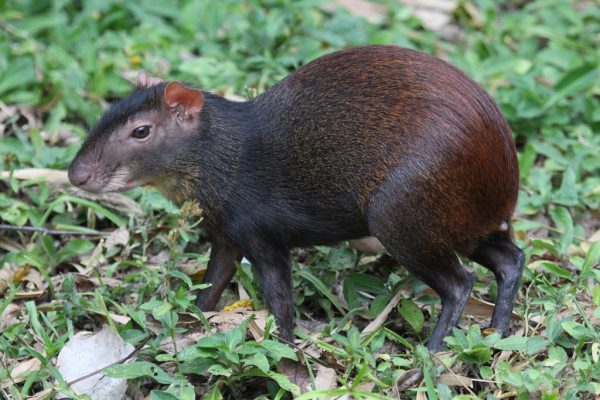 The Central American agouti is a swift runner with powerful teeth, which it uses to consume a wide variety of fruits and nuts
The Central American agouti is a swift runner with powerful teeth, which it uses to consume a wide variety of fruits and nuts
| PC: Commons
See Them for Yourself
As the foliage thins in the reserve at Las Catalinas and the movement and behaviors of these animals change, it can be possible to catch a rare sighting of these creatures in their natural habitats while out on the trails, especially at dawn or dusk. Setting out from town, it’s only a few minutes walk into the forests, where these animals roam as part of the rejuvenated forest in the reserve. Explore this tropical habitat, which has more than 52 documented mammal, bird, and reptile species, when you visit town.
[maxbutton id="1" url="https://cta-redirect.hubspot.com/cta/redirect/4917861/bb90976c-fd33-457a-a285-892e384bad66" text="Stay and Explore the Reserve" ]